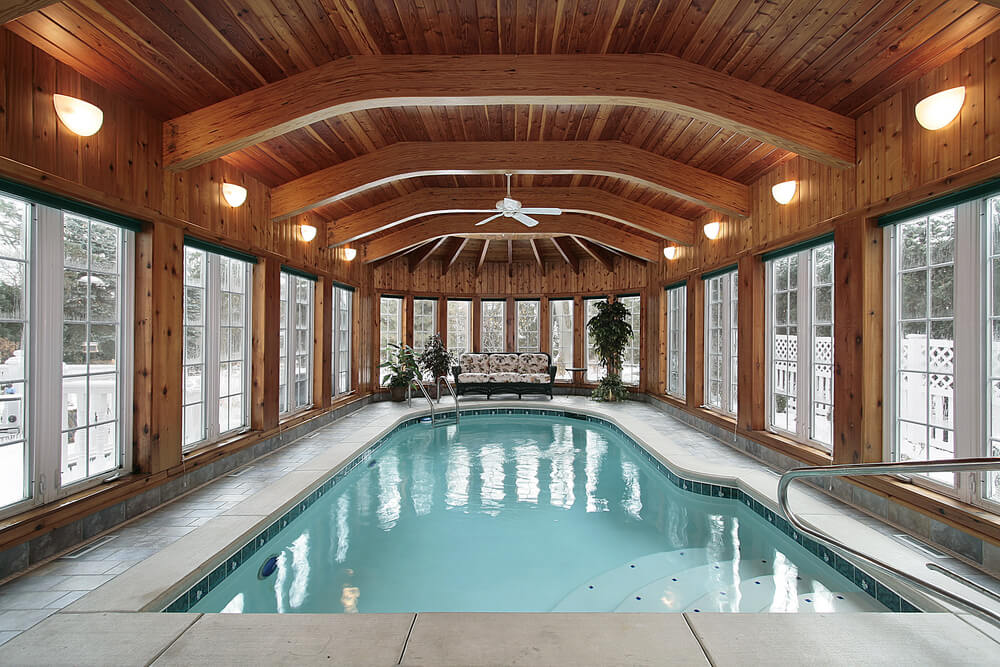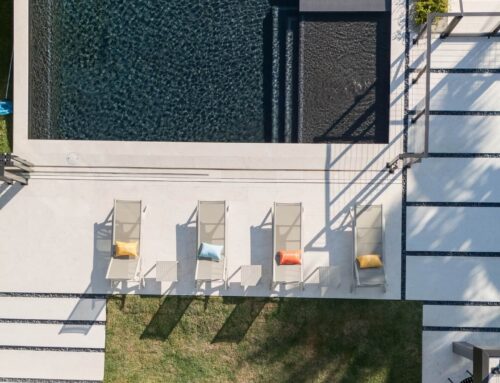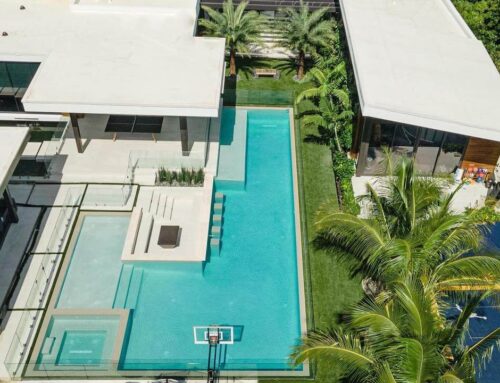So you love water activities, the health benefits of swimming, or the social boon of a pool party, but owning a pool of your own seems like just too much.
Here’s an alternative that may give you what you desire in a form that’s much more manageable for you: Indoor Pools.
Whether it’s seasonal availability, maintenance, safety, or privacy, open-air pools certainly have their drawbacks, but with an indoor pool, you get all the benefits of a pool with significantly less hassle.
Pros and Cons of Building an Indoor Pool
This list of Pros and Cons may not entirely apply to you, but it can certainly give you a good idea of what to expect.
Pros
- Year-round use of your pool, regardless of the weather or your local climate. Don’t depend on public pool availability or seasonal conditions. Stop worrying about it being too cold or rainy; use your pool when you want to!
- Maintain your wellness. Exercise or relax whenever you want to, day or night. With heating and lighting, your pool is available whenever you want it. Indoor pools also require fewer chemicals for their maintenance, making their use easier on your skin and hair.
- Privacy. Stop being uncomfortable with neighbors and passersby looking in on your watery fun, no longer will your comfort depend on the height of your privacy fence.
- Safety; less chance of trespassers or accidental swimmers, be they people or local wildlife.
- Property value. Much like their open-air counterparts, indoor pools add value to your property with their very presence, with the additional benefit of Indoor Pool space being added to your overall footage, increasing value further.
Cons
- Initial cost. While you may save on maintenance compared to an open-air pool, in-home pools tend to have a higher installation cost.
- Humidity can be an issue if it’s not adequately managed, but with a proper dehumidification system installed, it shouldn’t be an issue.
- Energy costs. These may be higher depending on your application; the enclosed space may need additional heating, but heating the pool itself is no different from an open-air version.
What Is the Best Type of Indoor Pool?
Now that we’ve covered why you might want an indoor pool let’s go over your options. The three most readily available indoor pool material options are concrete, fiberglass, and vinyl liner.
Concrete
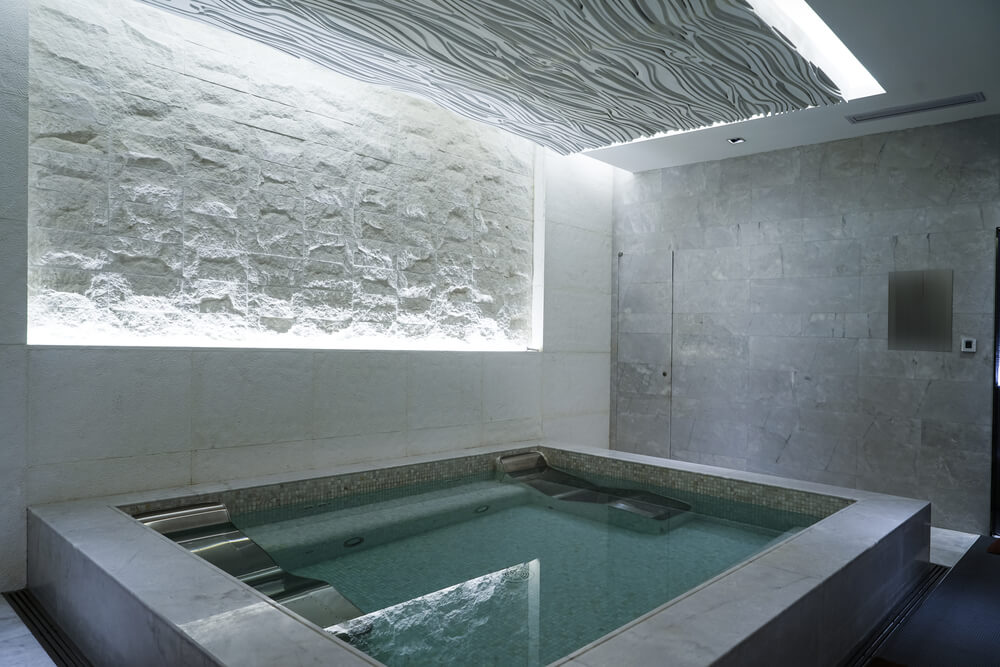
This is the most traditional pool construction method; it involves digging out the pool space and then building a rigid structure within the basin out of poured concrete. This structure is then treated with a variety of products to ensure waterproofing and texturing.
Concrete is usually the slowest approach, since building the structure, waiting for it to set, then treating it are all steps that require time and cannot be skipped or hurried; typically this process can take up to several months. This type of installation allows for basically any shape and size you want.
The cost of maintenance is also a consideration since this is the option that requires the most TLC in the long run.
Fiberglass Shell
This type of installation is usually the quickest. Once the pool area is dug out, the fiberglass shell is placed into it and secured, with minimal waiting time for the steps involved. This setup is very convenient if you want to minimize construction time.
Fiberglass shells also have a certain amount of flexibility, allowing the shell to adjust to potential earth movements which can be caused by soil settling, earthquakes, or tree roots intruding on the pool’s underground area.
This type of installation is also the least demanding as far as maintenance goes, since the pool’s inner surface is very smooth, allowing chemicals to be more efficient. There are also design constraints since it depends on pre-made shells. But at an additional cost, custom shapes and sizes can be ordered.
Vinyl Liner
This option is fairly quick to install, and allows for a lot of customization, but has the drawback of requiring extensive maintenance every 5-10 years since the liner will eventually leak. This leaking can cause issues if not prevented in a timely fashion. That being said, this is the option with the smallest initial installation cost, since the materials are not overly expensive and have a quick installation period.
How Much Does It Cost to Build an Indoor Pool?
So, taking all of the above into account, here’s what it will cost to build an indoor pool. That is of course unless you want to learn how to build an indoor pool and build it yourself.
The average cost for indoor pools is about $125-$200 per square foot. This amount varies depending on the type of installation you choose and any associated factors such as design, size, heating, type of enclosure, etc.
This is a difficult question to answer as individual circumstances such as design, size, material choices, and other characteristics vary wildly from case to case, but in a general sense, Concrete is the most expensive option as it not only has the highest initial installation cost, which on average can be around $60,000, but you also have to take into account the higher operating costs, which for a 12’x24’ pool can be upwards of $25,000 per 10 years.
Fiberglass is the mid-range and most popular choice, coming in at a $50,000 average initial installation cost for a 12’x24’ pool, but without comparable operating costs.
The most economical option is, of course, Vinyl. It has an average initial installation cost of about $37,000 for a 12’x24’ pool and a lot of design flexibility. This type of installation however has to take into account the more involved maintenance, as well as liner replacement about every 5-10 years at a significant cost.
Indoor Pool Options on a Budget
Having a pool in the house doesn’t have to break the bank. If the initial installation cost is more than you’re willing to pay, there are some alternatives to consider that drastically reduce the overall cost of an indoor pool.
- Covers, automatic or otherwise, which come in a variety of heights for different applications can significantly reduce the costs associated with heating and humidity, as well as potentially adding a safety factor.
- Install enclosures instead of a structure to cover your indoor pool. These can be temporary such as inflatable ones, permanent but lighter such as screens, which reduce maintenance needs but still allow for natural sunlight albeit with a decreased chance of sunburn. They can also be retractable, allowing you to use your pool whenever you want to.
- Size and purpose drastically affect the cost of a pool, so choosing the best size for you may reduce your overall costs. Furthermore, if you have specific purposes in mind for your pool, such as swimming laps, for example, an endless pool may be the solution for you.
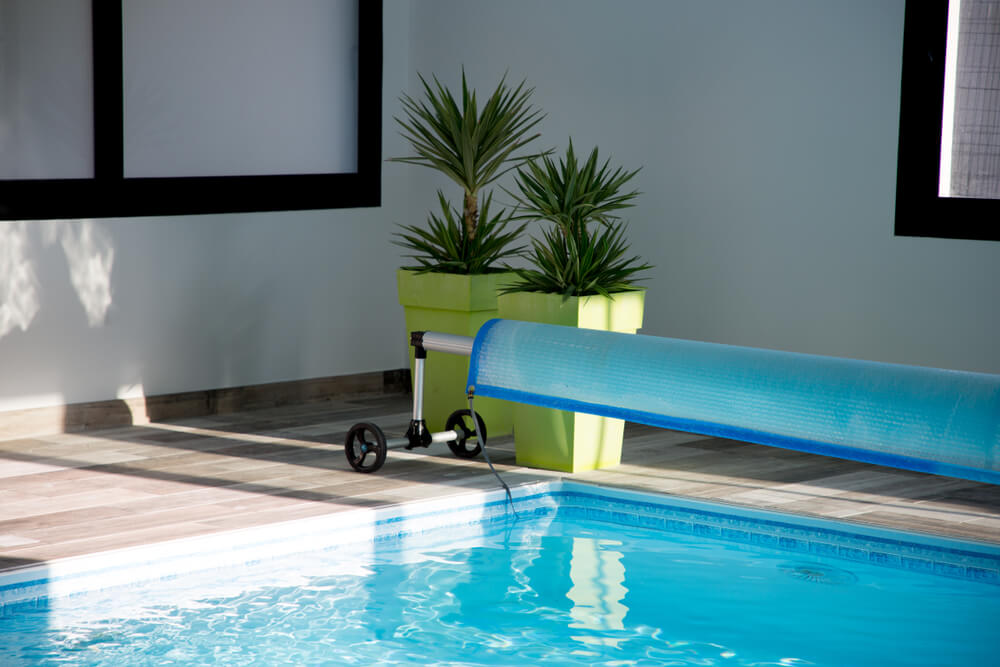
Outdoor or Indoor, Get The Pool That’s Right For You
Indoor pools are an alternative that broadens a pool’s usability, considerably extending the benefits owners get from their pool. They have reduced costs compared to open-air pools and add even more value to a home than traditional pools.
Costs vary depending on many factors, but on average the overall most expensive option is Concrete, followed by Fiberglass. Finally, Vinyl is the cheapest option but has drawbacks that must be taken into account.
Options, design, and purpose will affect your pool’s cost, but some numerous options and alternatives can make an indoor pool a reality for you.
If you want to learn more about indoor pools and how much it would cost to install, call us today. One of our pool installation professionals will be happy to give you a free estimate. Or, leave a comment right now and we’ll be happy to answer any questions you may have.

